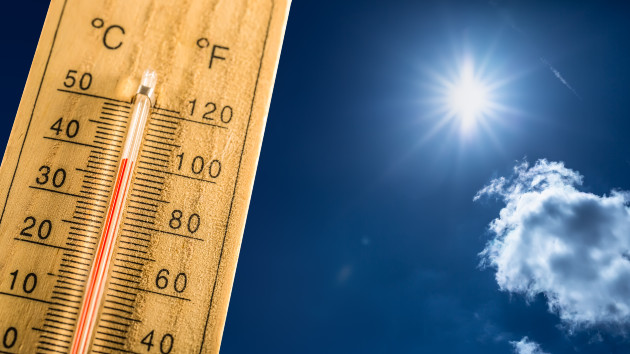Amphibians are in widespread decline, and climate change is to blame, study says
Written by ABC Audio All Rights Reserved on October 4, 2023

(NEW YORK) — A major class of vertebrate species is experiencing widespread population declines due to climate change, according to new research.
Amphibians, the most threatened class of vertebrates, are deteriorating globally, with about 40% of more than 8,000 amphibian species studied categorized as threatened — a greater percentage than threatened mammals, reptiles or birds, a paper published in Nature on Wednesday suggests.
Habitat loss due to agricultural expansion, timber and plant harvesting and infrastructure development is the most common threat, affecting about 93% of threatened amphibian species, Jennifer Luedtke, manager of species partnerships for conservation nonprofit Re:wild and the global coordinator for the Amphibian Red List Authority for the International Union for Conservation of Nature’s Amphibian Specialist Group, told reporters during a news conference.
But global warming in recent decades is likely the culprit for the increased declines, the researchers said. Since 2004, when the first Global Amphibian Assessment was completed by the IUCN, the primary driver of the declines has shifted from disease to climate change, according to the paper.
Between 2004 and 2022, the effects of climate change were responsible for 39% of amphibian species moving closer to extinction, compared to just 1% in the two decades prior, Kelsey Neam, species priorities and metrics coordinator at Re:wild and program officer for the Red List Authority of the IUCN’s Amphibians Assessment Group, told reporters.
Amphibians are particularly sensitive to changes in their environment, partly because they breathe through their skin, Neam said.
Effects of climate change — like sea level rise, wildfires, changes in moisture and temperature and increasing frequency — and intensity of extreme weather events — such as storms, floods and drought — can result in the loss of important breeding sites for amphibians, which can then lead to increased mortality, Neam said.
Amphibians are often forced to adapt or move elsewhere, but the changes are often occurring too quickly for them to adapt, and habitat fragmentation is creating barriers that make migration increasingly challenging, Neam said.
“Habitat protection alone won’t be sufficient as a risk reduction measure,” Luedtke said. “We really need to be promoting the recovery of amphibians by mitigating the threats of disease and climate change through effective actions.”
Salamanders and newts were found to be the most heavily affected species, according to the paper.
The greatest concentrations of threatened species were found in the Caribbean islands, Mesoamerica, the tropical Andes in South America, the mountains and forests of western Cameroon and eastern Nigeria in Africa, Madagascar, the Western Ghats and Sri Lanka.
Documented amphibian extinctions also continue to increase, the study found. At least 37 species have been lost since 1980, the most recent being two frog species, Atelopus chiriquiensis and Taudactylus acutirostris.
However, not all the paper’s findings were bad news, the researchers said.
Since 1980, the extinction risk for 63 species of amphibians has been reduced due to conservation intervention, “proving that conservation works,” Luedtke said.
Urgent scaled-up investment and policy responses will be needed to support the survival and recovery of amphibians, the researchers said.
Copyright © 2023, ABC Audio. All rights reserved.






